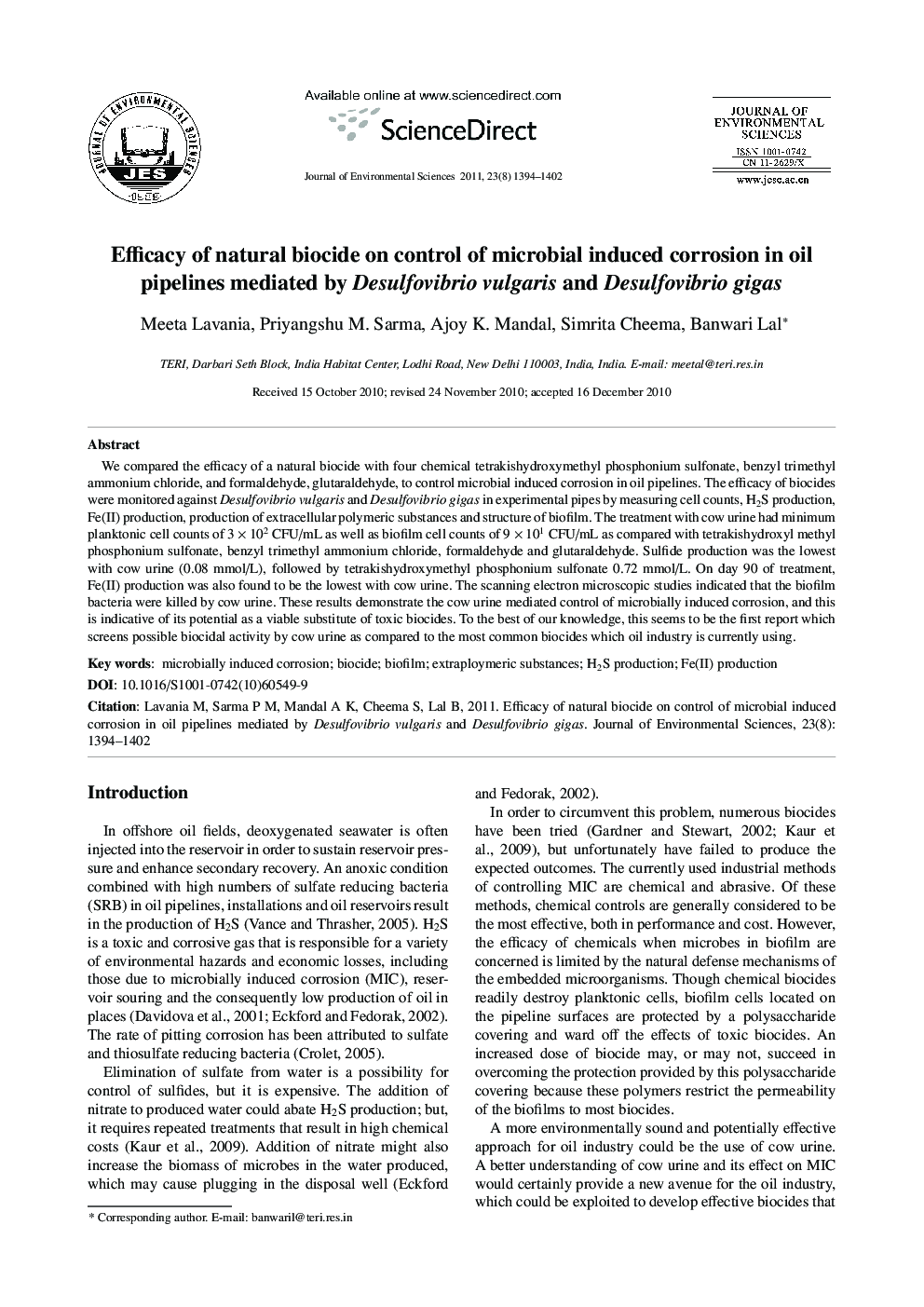| کد مقاله | کد نشریه | سال انتشار | مقاله انگلیسی | نسخه تمام متن |
|---|---|---|---|---|
| 4454832 | 1312495 | 2011 | 9 صفحه PDF | دانلود رایگان |

We compared the efficacy of a natural biocide with four chemical tetrakishydroxymethyl phosphonium sulfonate, benzyl trimethyl ammonium chloride, and formaldehyde, glutaraldehyde, to control microbial induced corrosion in oil pipelines. The efficacy of biocides were monitored against Desulfovibrio vulgaris and Desulfovibrio gigas in experimental pipes by measuring cell counts, H2S production, Fe(II) production, production of extracellular polymeric substances and structure of biofilm. The treatment with cow urine had minimum planktonic cell counts of 3 × 102 CFU/mL as well as biofilm cell counts of 9 × 101 CFU/mL as compared with tetraki shy droxy 1 methyl phosphonium sulfonate, benzyl trimethyl ammonium chloride, formaldehyde and glutaraldehyde. Sulfide production was the lowest with cow urine (0.08 mmol/L), followed by tetraki shy droxy methyl phosphonium sulfonate 0.72 mmol/L. On day 90 of treatment, Fe(II) production was also found to be the lowest with cow urine. The scanning electron microscopic studies indicated that the biofilm bacteria were killed by cow urine. These results demonstrate the cow urine mediated control of microbially induced corrosion, and this is indicative of its potential as a viable substitute of toxic biocides. To the best of our knowledge, this seems to be the first report which screens possible biocidal activity by cow urine as compared to the most common biocides which oil industry is currently using.
Journal: Journal of Environmental Sciences - Volume 23, Issue 8, August 2011, Pages 1394-1402